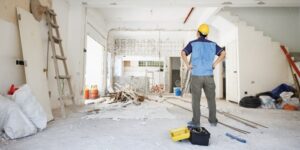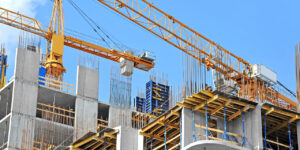Autoclaved aerated concrete Malaysia (AAC) is a lightweight building material that has gained popularity in Malaysia and around the world in recent years. It is known for its excellent insulation properties, durability, and sustainability. In this blog post, we will take a closer look at AAC and its use in Malaysia.

What is Autoclaved Aerated Concrete?
AAC is a lightweight building material that is made from natural raw materials such as cement, lime, and sand. These materials are mixed with water and a foaming agent, and then poured into a mold where it is left to cure for several hours. The curing process causes the mixture to expand and harden, resulting in a lightweight, cellular structure that is similar to that of a honeycomb.
AAC is available in various sizes and thicknesses, making it a versatile building material that can be used for a range of applications, from residential homes to commercial buildings.
The Benefits of Autoclaved Aerated Concrete
- Lightweight: AAC is significantly lighter than traditional concrete, which makes it easier to transport and handle during construction.
- Insulation: AAC has excellent insulation properties, which means that it can help to reduce energy costs and maintain a comfortable indoor temperature.
- Fire Resistance: AAC is a non-combustible material, which means that it is highly resistant to fire and can help to prevent the spread of flames.
- Durability: AAC is a long-lasting building material that is resistant to damage from pests, moisture, and weathering.
- Sustainability: AAC is made from natural raw materials, and its production process is energy-efficient and produces minimal waste.
AAC in Malaysia
AAC has been used in Malaysia for several years, primarily for commercial and industrial buildings. However, there has been a recent trend towards using AAC for residential construction as well, due to its many benefits.
One of the most significant benefits of AAC in Malaysia is its ability to withstand earthquakes. Malaysia is located in a region that is prone to seismic activity, and traditional building materials are often unable to withstand the force of an earthquake. AAC, on the other hand, has been shown to be highly resistant to earthquakes, making it an ideal building material for the region.
Another benefit of AAC in Malaysia is its excellent insulation properties. The hot and humid climate in Malaysia can lead to high energy costs, but AAC can help to reduce these costs by maintaining a comfortable indoor temperature. This is particularly important for residential buildings, where occupants spend most of their time.
In addition to its insulation properties, AAC is also a sustainable building material that is gaining popularity in Malaysia. The use of natural raw materials and energy-efficient production processes aligns with the country’s efforts to reduce its carbon footprint and promote sustainable development.
Conclusion

Autoclaved aerated concrete is a versatile and sustainable building material that is gaining popularity in Malaysia and around the world. Its lightweight nature, insulation properties, and durability make it an ideal choice for residential and commercial buildings. With its ability to withstand earthquakes and reduce energy costs, it is an excellent option for the hot and humid climate of Malaysia. As the country continues to focus on sustainable development, the use of AAC is likely to increase in the coming years.
